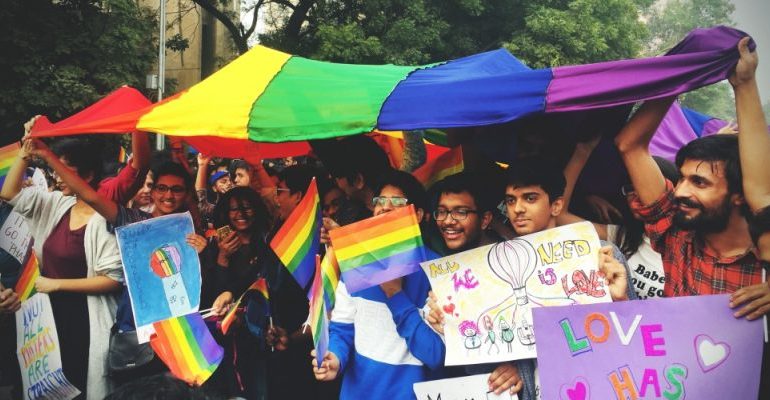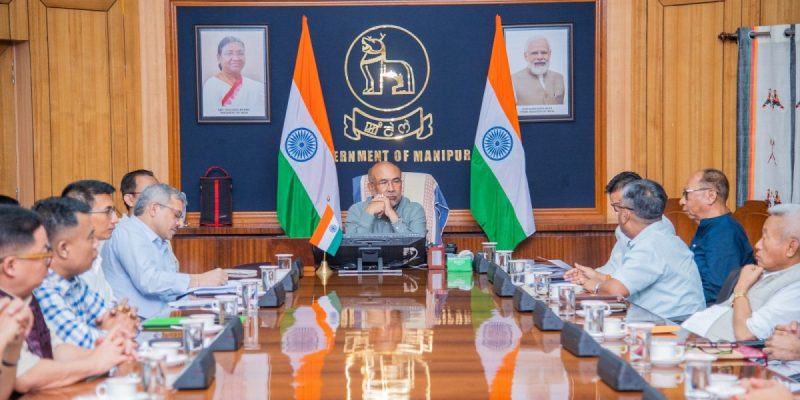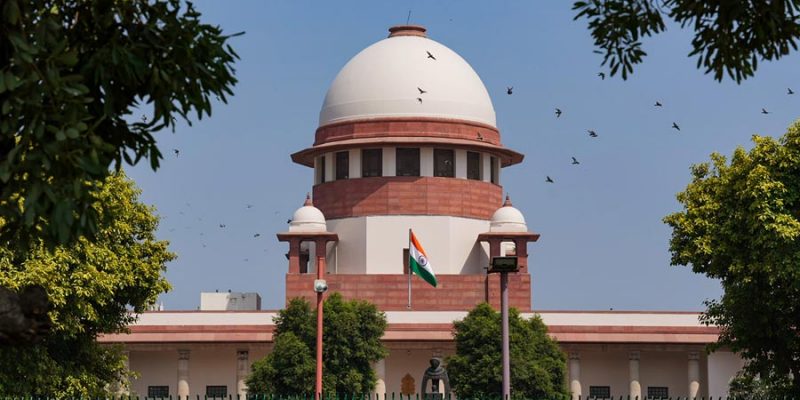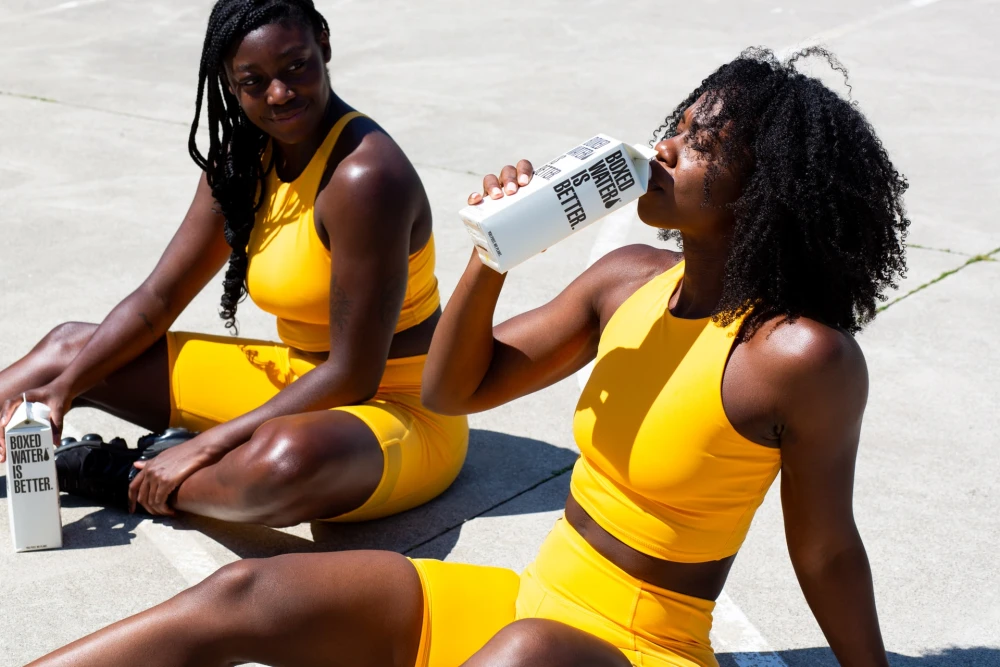There May Be a Silver Lining in the Supreme Court’s Marriage Equality Judgment

The recent judgment of the Indian Supreme Court on marriage equality was, without a doubt, a disappointment for India’s queer community. With a 3:2 majority, the Supreme Court held that queer couples in non-heterosexual relationships do not have a fundamental right to marry and denied legal recognition to their relationships. The court’s judgment placed heterosexuality at the centre of marital relationships by holding that marriage between persons of opposite gender is the only valid form of marriage under Indian law.
Thus, while transgender persons identifying within the gender binary who are in heterosexual relationships are entitled to marry, queer couples who do not find themselves in what can be classified as heterosexual relationships are left without any legal remedy.
But perhaps in rejecting that there is any fundamental right to marry under the Constitution for queer couples or otherwise, the court has opened a portal (especially in the minority opinions) for re-imagining the existence of what were understood to be matrimonial entitlements (like succession rights, adoption, guardianship, financial entitlements that accrue to spouses etc.) beyond marriage. We discuss the implications of this possibility.
The petitioners had primarily mounted a challenge to the provisions of the Special Marriage Act, 1954 arguing that the non-recognition of non-heterosexual marriages under the Act violated their fundamental right to marry and discriminated against them on the basis of sexual orientation. An important prong of the petitioners’ argument was that they are denied the matrimonial benefits listed above.
Also read: Two Steps Forward, Three Steps Back: Supreme Court Verdict on Marriage Equality
Many challenge the idea of marriage as the ‘norm’
Indeed, the queer community’s quest for marriage is either grounded in (i) the belief that marriage is a normative ideal to which queer people should also have access to; or (ii) marriage provides a bouquet of entitlements, the absence of which significantly disadvantages those in queer relationships. Some queer individuals will agree with both propositions. But many challenge the elevation of marriage as the norm and as an ideal that all of us should aspire towards. They highlight the oppressive foundations of marriage, specifically its heterosexist nature and foundation in caste endogamy, which is difficult to dismantle. Further, they argue that marriage as an institution, through the bundle of rights and entitlements it provides, privileges married partners over others who choose to not marry or cannot marry.
It is difficult to contest that marriage is founded on heterosexist norms. Marriage continues to be imagined primarily as a heterosexual union (even if the social reality may be different or is changing). Queer people across jurisdictions have won marriage rights after much suffering and only after being able to prove that their love/relationship conforms to a heterosexual ideal.
The majority opinion authored by Justice Bhat in the marriage equality judgment also highlights and reinforces the heterosexist values that are attached to marriage. He says, ‘marriage, however, has been regarded for the longest time, as a relationship of man to woman’ and at another place, he reiterates that, ‘traditions of marriage per se may not support the basis of recognition of marital relationships between non-heterosexual couples’.
Examples of weddings between same-sex couples in India or of relationships that are functionally identical to marriage between same-sex couples (in the absence of legal recognition) are not enough to displace the normative assumption that marriage is a heterosexual union. Social marriages that deviate from the heterosexual script are considered only as exceptions, not as evidence of a pluralist understanding of marriage. They remain exceptions because the norm that the marriage establishes is of the heterosexual union.
Even if we say that queer couples, by gaining the legal right to marry, can somehow displace these heterosexist assumptions of who can marry and whom, they cannot dismantle the privilege of committed coupledom that marriage prescribes over other forms of adult associations and kinship. This is because these other forms of adult associations veer off the course of heteronormativity in ways that same-sex committed coupledom does not. As Katherine Franke has argued: same-sex marriage can still fall under the ambit of traditional family values that promote nuclear family, bourgeois respectability and privatised dependency.
Feminist critique of marriage
Marriage’s place as the normative ideal creates symbolic harm for individuals, queer or otherwise, who refuse to participate in marriage. In fact, feminist critiques of marriage as an oppressive institution have been the most trenchant. They have highlighted how marriage continues to be a patriarchal institution, even if many of the marriage laws that discriminated against women (like the law of coverture) have been removed.
Also read: Supreme Court’s Marriage Equality Judgment Represents Judicial Abdication
Queer participation in marriage reinforces its status as the most sacred form of commitment, as the only relationship form that can confer dignity to queer lives and something that saves individuals from the doom of loneliness. In Obergefell v. Hodges, the US Supreme Court relied on similar tropes stating that marriage has some transcendental importance and it’s the only institution that can fulfil our most ‘profound hopes and aspirations’.
Even Justice Bhat in the majority opinion refers to similar uncritical characterisations of marriage, stating that it is regarded ‘as one of the most important relationships’ and a ‘building block’ of the society. But do cohabiting unmarried partners, hijra gharanas, mentors and mentees or intimate friends not form networks or relationships equally worthy as marriage, where they share love, caregiving responsibilities and companionship?
If marriage is an oppressive and exclusionary institution and queers, women and the unmarried are better off without it, at least its legal existence, why does it remain important?
The answer lies in the minority opinion of Chief Justice of India (CJI) D.Y. Chandrachud in the marriage equality judgment where he states that marriage is not by itself as fundamental to our lives, it has gained significance because the state regulation of ‘family’ has conferred certain benefits to those who are married.
As Clare Chambers notes, marriage is the relationship that ‘the state assumes, defines, regulates, and recommends’. Hence, although marriage undermines our transformative goals of establishing an egalitarian order where a plurality and diversity of relationships or lifestyles are valued, we are forced to use the institution of marriage because it’s the only way we get access to certain entitlements (next-of-kin privileges, ability to be on disability pension plans of our partners, employment benefits, workmen’s compensation etc.) These entitlements protect us from certain vulnerabilities that arise at the breakdown of relationships or our adult networks of care (through legal entitlements to shared property, custody of children, maintenance etc.)
The creation of the concept of the right to form an abiding union (sans marriage) discussed in minority opinions of CJI Chandrachud and Justice Kaul goes someway in displacing the centrality of marriage over other relationship forms in our understanding of a family.
CJI Chandrachud in his minority opinion develops the concept of abiding cohabitational unions drawing from the observations in the Deepika Singh judgment where he held that atypical families are equally deserving of protection under the law and benefits under the social welfare legislation as traditional families. In the marriage equality judgment, he emphasises that we may find ‘companionship’ and ‘value-abiding relationships with other human beings in different forms and capacities’.
Also read: Justice Ravindra Bhat’s Legacy Goes Beyond the ‘Marriage Equality’ Judgment
CJI Chandrachud finds the legal justification for the right to form such unions under Articles 19, 21 and 25 of the constitution. Crucially, the CJI reads Article 19(1)(c), which confers the freedom of association, to include the right to form intimate associations. Now this has the possibility to extend beyond relations of conjugality or coupledom and encompass various permutations and combinations, even though CJI Chandrachud himself does not fully acknowledge this radical potential of the right to form intimate associations and limits himself to the discussion of queer couples forming unions.
There is a certain tension in his opinion where he recognises that companionship, commitment and care can flow from different forms of associations – including friendship, mentor-mentee relationship or queer kinship networks that are not based on biological bonds – but then he reverts the idea of queer coupledom when he explicitly pens out who is the beneficiary of this right to form a union.
Be that as it may – and this is where the majority disagrees with him – CJI Chandrachud, says that these associations need to be recognised by the state so that there is actually a ‘free and unrestricted’ exercise of this freedom. In the absence of the conditions that facilitate the exercise of a particular freedom, the freedom to do something becomes meaningless.
Entitlements such as access to ration cards, joint bank accounts, next-of-kin privileges in case of a medical event, jail visitation rights, access to the body on death, succession rights, maintenance, financial benefits under the Income Tax Act and employment benefits relating to gratuity, family pension, insurance etc. are usually exclusive to traditional families – relationships born out of marriage or blood ties.
CJI Chandrachud does not conclude that queer couples in unions are entitled to the same entitlements that a legally recognised married couple would possess but leaves it to a committee headed by the cabinet secretary to define and elucidate the scope of these entitlements. This deferral has been subject to criticism as the majority judgment refuses to even accord a right to union to queer couples and considering the position of the Union government on this issue, it is unlikely the executive would take on this task.
While many of the entitlements available to those in unions are left to the committee to decide on, the CJI’s minority opinion explicitly delinks adoption from marriage. Relying on Article 14 of the Constitution (right to equality) and Article 15 (right against discrimination), he holds that both married and unmarried couples – including queer couples – are entitled to adopt. He questions the assumptions of the government’s adoption regulations that envision that only married couples can provide a stable environment for a child. He observes that ‘there is no single form of a stable household’.
CJI Chandrachud states the stability of a household is not dependent on marital status but rather on factors like the investment of time and effort by parents in running the household, their ability to create a safe space, the absence of physical, emotional and mental violence in the household etc. These observations displace marriage as the ideal and normative form of relationship.
But the majority opinion, in a disappointing turn of events, holds that while adoption law does make assumptions about who is fit to be a parent, there is once again a deference to the executive. In effect, the majority abdicated its responsibility for assessing the discriminatory assumptions that the law makes about unmarried couples when it comes to adoption.
Other entitlements granted to ‘non-traditional’ families
However, in addition to the right to adoption, the CJI’s opinion has fallen short of actually granting entitlements to non-traditional families. Both his and the majority’s opinion would have benefitted from looking at some of the other entitlements that have already been granted to non-traditional families.
The Himachal Pradesh high court in 2016 recognised the customary significance of the guru-chela relationship and held that the guru was entitled to the property of the deceased chela. Similarly, the Mental Healthcare Act 2017 permits the nomination of a representative who does not fall within the traditional category of family. While these legal entitlements have limited import, the court had the opportunity to build upon these in the judgment to some extent, perhaps in the form of interim remedies instead of leaving the entire task to the executive.
Overall, we can derive two possibilities from CJI Chandrachud’s minority opinion for creating a more egalitarian legal framework on relationships i.e. (a) to think of intimate associations beyond marriage and (b) to delink what were thought to be matrimonial benefits from marriage. We note that the minority opinion of Chief Justice Chandrachud itself does not expand the concept of associations beyond coupledom, but it carries the radical potential to do so.
Rituparna Borah’s petition was one of the pleas filed in the marriage equality case that advocated for the queer individuals’ right to form ‘chosen families’. The minority opinion creates an opening for demanding legal status and regulation for such ‘chosen families’ in the different forms they may take. This can include creating legal access to material benefits as well as providing legal protection from vulnerabilities that arise on account of being in any relational setting.
The way forward for the queer community, perhaps, is not to insist on a right to marry but to challenge laws that privilege marriage over other forms of familial and kinship bonds. It is to return to the politics of queer liberation which has space for plurality and diversity. It is not to resign ourselves to a second-class status but to build coalitions with those who are perhaps not queer by identity but still ‘queer’ enough to reject the institution of marriage.
But what of the majority opinion one may ask? While the majority has rejected the right to form a union, Article 14 (right to equality) which requires the state to make reasonable classification still exists. The classification between married and unmarried under the law is often more moral than reasonable. Also, many important constitutional principles that we know today found their place first in the dissents or minority opinions, before they became the opinions of the court. There is much to be discontented with, but transformative readings of law are always possible.
Aishwarya Singh is a lecturer at Jindal Global Law School, Sonipat. Meenakshi Ramkumar is a Visiting Assistant Professor at the National Law School of India University, Bangalore teaching Family Law. Views expressed are personal.
Disclaimer: Aishwarya Singh is a former judicial law clerk of CJI Chandrachud.







